

5月30日,第六个“全国科技工作者日”到来之际,由中国科协与中国日报联合策划、国际科技传播研究院承制的“致敬科技工作者”八联版于正式推出,英文专题页面也同步上线。
该报在“科学家人物群像”版块,以“先驱”(Pioneer)为主题,对南方科技大学校长、中国科学院院士薛其坤在内的9位杰出中国科学家的故事,并以手绘画像面向全球读者展示中国科学家群像,致敬创新争先、自立自强的全国科技工作者。
八联版梳理了党的十八大以来中国在科技创新方面的重大突破、重大成果,通过一系列数据图表回顾了中国科协十年来在学术、科普、智库等方面的工作进展和成效。中国科协主席万钢发表了题为《携手世界共建美好未来》的署名文章,阐明了中国科技界深化开放合作的信心和行动。“科学家人物群像”版块围绕面向世界科技前沿、面向经济主战场、 面向国家重大需求、面向人民生命健康四个方面分别采访了薛其坤、蔡韬、包信和、梁建英、李德仁、李玉、屠呦呦、王迎军、朱涛等九位院士专家,并同步推出了科技工作者手绘漫画系列,旨在对外讲好中国科学家故事,塑造中国科技界积极参与科技伦理治理、服务人类命运共同体建设的群像。
原文报道节选翻译:
薛其坤,59岁
薛其坤凭着坚韧不拔、追求卓越、对解决重大科学问题的强大驱动力等核心品质,从一个来自山东农村的穷学生成长为中国最有成就的物理学家之一。
2013年初,薛其坤和他的团队经过四年的严格实验,在《科学》杂志上发表了他们对量子反常霍尔效应的发现成果,在国际物理学界引起巨大反响。
该杂志的审稿人员将薛其坤的发现称为“里程碑式的发现”和“拓扑物理学中最值得期待的现象之一”。2013年4月,1957年诺贝尔物理学奖获得者杨振宁先生曾评价其成果为“从中国实验室里发表的第一篇诺贝尔奖级的物理学论文”。
拓扑绝缘体是一种外部导电而内部绝缘的奇特材料,无需使用强磁场。而量子反常霍尔效应可以在拓扑绝缘体中创建“电子高速公路”。
薛其坤认为,如果用在日常设备中,这种效应可能会大大降低能耗和散热,有助于工程师们设计出更小巧易携、功能强大的电子和光子产品。
“建立新的科学理论、发现新的科学效应和科学规律是基础研究‘皇冠上的明珠’。” 薛其坤说道,“量子反常霍尔效应的发现是中国物理学工作者对人类科学知识宝库的重要贡献。”
2020年,薛其坤辞去了清华大学副校长的职务,将他的教学理念带到了南方科技大学。他希望在南方科技大学继续培养大量能够在基础研究领域实现重大原创性突破的世界级科学人才。
薛其坤认为,一所高质量的研究型大学应该鼓励科学探索、宽容失败,尊重学术自由,强化基础研究。
他还认为,大学应该提供一个有利于培养年轻人才的评估和支持系统,为基础研究提供持续支持,并实现原始创新和突破。
背景资料:
薛其坤是一位在凝聚态物理、超导体和拓扑绝缘体领域享誉世界的实验物理学家、中国科学院院士、美国物理学会会士。
他的“量子反常霍尔效应的实验发现”项目获得2018年度国家自然科学奖一等奖。2020年,薛其坤成为第一位获得菲列兹·伦敦奖的中国公民,目前担任南方科技大学校长。
《中国日报》报道英文原文:
On May 30, China celebrates its sixth annual National Science and Technology Workers' Day. It is a day that commemorates China's latest scientific and technological achievements and the innovative, insightful and industrious workers that created them. Highlighting this year's theme of "striving for innovation excellence", "achieving self-reliance and strength" in sci-tech, we have profiled nine noted Chinese scientists and engineers. Each has pushed the global scientific frontiers, spurred economic growth, fulfilled the country's crucial needs or safeguarded public health. Together, they represent a diverse and inclusive group portrait of China's scientific and engineering community. Despite their different ages, genders and backgrounds, they are all pioneers of our time and the pride of a nation.
CHINA'S SCI-TECH COMMUNITY DEDICATED TO OPENNESS
The new round of scientific, technological and industrial innovation being promoted globally is having a profound influence on the world's development pattern. The international environment is becoming more complex with rising uncertainty and instability, which poses unprecedented challenges to mankind.
Scientific and technological innovation serves as an important engine driving social development. All countries should uphold peace, development, cooperation and win-win partnership, and work together to cope with unknown risks and challenges.
China's sci-tech community has always adhered to the concept of openness, cooperation and innovative development. It focuses on frontier science and technology, the main economic battlefield, major State needs and the improvement of people's lives and health.
The community is also committed to improving the innovative progress of science and technology, as well as stimulating the vitality of sci-tech innovation, promoting the spirit of scientists, and strengthening the ethical governance of science and technology.
It has proactively participated in global sci-tech governance and contributed to the building of a community with a shared future for humankind.
The China Association for Science and Technology, which is the largest non-governmental organization of sci-tech professionals in China, serves as a bridge to link millions of Chinese scientists, engineers and other professionals working in this field.
One major task of the association is to conduct academic exchanges and promote the construction of world-class sci-tech journals and institutions, in a bid to give full play to its irreplaceable role in academic innovation.
The association insists on carrying forward the scientific spirit, popularizing scientific knowledge, organizing science education activities among the youth, and improving the scientific literacy of all citizens. The proportion of Chinese citizens with "scientific qualities" increased from 3.27 percent in 2010 to 10.56 percent in 2020.
Moreover, it highlights international sci-tech exchanges and cooperation. The association and its branches nationwide have joined 372 international sci-tech organizations, aiming to participate in global sci-tech governance and play a unique role in non-governmental international sci-tech exchanges and cooperation. Although profound changes have been taking place in both the domestic and international environment on the new stage of development, China will strengthen its confidence and actions to increase opening-up and cooperation.
Wan Gang, president of the China Association for Science and Technology
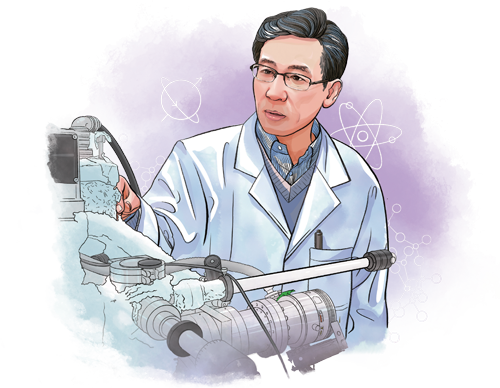
Xue Qikun, 59
Resilience, determination, and a strong drive for excellence toward solving a major scientific question are the qualities that transformed Xue Qikun from a poor student from rural Shandong province to one of the country's most accomplished physicists.
In early 2013, after four years of rigorous experiments, Xue and his team published their discovery of the quantum anomalous Hall effect in the journal Science, sending a shockwave through the global physics community.
The journal's reviewers called Xue's discovery a "milestone" and "one of the most awaited phenomena in topological physics". In April 2013, C. N. Yang, who won the Nobel Prize in physics in 1957, called Xue's work "the first Nobelprizeworthy physics paper from a Chinese lab".
The effect can create "highways for electrons" in topological insulators, a class of exotic material that is conductive on the outside but insulating on the inside, without the use of a strong magnetic field.
If used in everyday gadgets, the effect may greatly reduce energy consumption and heat dissipation, allowing engineers to design more compact and powerful electronics and photonics, Xue said.
"Creating new scientific theory and discovering new phenomena and effects are the crown jewels of fundamental research," Xue said. "The discovery of the quantum anomalous Hall effect represents a major contribution by Chinese physicists to humanity's treasure trove of knowledge."
In 2020, Xue left his position as the vice-president of Tsinghua University and brought his teaching philosophy to the Southern University of Science and Technology, where he hopes to continue to cultivate a wealth of world-class scientific talents capable of creating major original breakthroughs in basic research.
Xue said a quality research university should encourage scientific exploration, tolerate failure, uphold academic freedom and enhance basic research.
It should also have an evaluation and support system that is beneficial for nurturing young talents, providing sustained support for basic research, and creating original innovations and breakthroughs, he added.
A world-renowned experimental physicist in condensed matter physics, superconductors and topological insulators. He is an academician of the Chinese Academy of Sciences and a fellow of the American Physical Society.
Xue received the first prize of the 2018 State Natural Science Award for his discovery of the quantum anomalous Hall effect in a lab experiment. He became the first Chinese citizen to win the Fritz London Memorial Prize in 2020. He is currently the president of the Southern University of Science and Technology in Shenzhen, Guangdong province.

Cai Tao, 40
For Cai Tao, an associate researcher with the Tianjin Institute of Industrial Biotechnology at the Chinese Academy of Sciences, blue is not a color associated with sadness, but with hope and success.
For over six years, his team focused on a single task: how to synthesize starch in a way that is similar to the process in plants, but do it much faster.
Unlocking this insight is key to sustainability on Earth and future space exploration as it theoretically allows scientists to recycle carbon dioxide and turn this common industrial byproduct and greenhouse gas into food.
With the aid of supercomputing and clever bioengineering, Cai streamlined the complex natural starch-making process via photosynthesis into 11 steps, with the final product being starch, whose solution turns blue upon contact with iodine.
"On July 24, 2018, our solution turned light blue for the first time after hundreds of failed experiments. It was a great moment of introspection and awe," he said. "We overcame countless difficulties over the years, and for us that light blue in a tube shone like a bright ray of hope."
Cai's findings were published in the journal Science. The Ministry of Science and Technology, the Chinese Academy of Sciences, and the China Union of Life Science Societies at the China Association for Science and Technology unanimously named it one of China's biggest original breakthroughs in basic sciences last year.
Reflecting on his achievement, Cai said maintaining curiosity, bravely forging a new path, and having the perseverance to push through the rigorous and monotonous work are the key to success for young scientists.
Aligning personal research interest with the major strategic needs of the country and the most challenging scientific questions will generate enormous passion and energy crucial for making original breakthroughs, he said.
"I hope more young scientists, including myself, can keep calm and remain focused on solving the basic scientific challenges behind our country's needs and make our mark on China's path toward achieving self-sufficiency in science and technology," he added.
An associate researcher at the Tianjin Institute of Industrial Biotechnology of the Chinese Academy of Sciences. In 2021, a team consisting of Cai and the institute's director Ma Yanhe became the first in the world to artificially synthesize starch from carbon dioxide in a lab experiment.
The new technique was published in the journal Science and would revolutionize agriculture if proven to be economically viable at the industrial level. The research was named one of China's top 10 scientific advances last year by the High-tech Research and Development Center of the Ministry of Science and Technology.
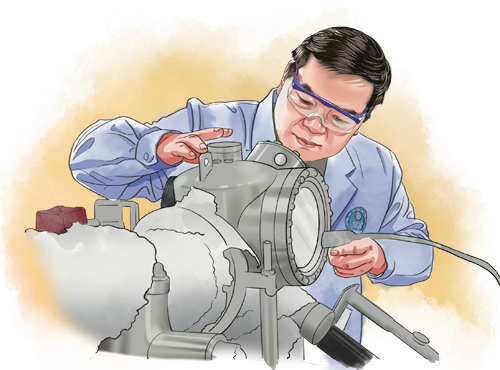
Bao Xinhe, 63
Passion, communication, unyielding curiosity and a keen eye for detail, along with decades of rigorous hard work, are some of the secrets that led to Bao Xinhe and his team discovering a new type of catalysis that holds promising industrial applications in fields of energy, oil refining, advanced materials and other sectors.
The concept of "nano-confined catalysis" provides important guidance on the design of highly efficient catalysts, which are defined as substances that facilitate chemical reactions without undergoing any permanent chemical changes themselves.
"The key to making efficient chemical reactions with less environmental and energy impact lies in a deep understanding of reaction mechanisms," Bao said.
"However, we don't always know how the reactants are converted into products, and what will come out in the end. It functions like a black box. The nanoconfined catalysis concept can shed some light on this, leading to more precise and controllable chemical reactions."
One major application of the nano-confined catalysis concept is the creation of a new type of catalyst that can directly convert carbon monoxide and hydrogen derived from coal gasification into light olefins without using a lot of water and energy, Bao said. This creates a new path to the efficient industrial development of water and energy-saving coal chemicals.
Another application of the concept is a catalyst designed to clean traces of carbon monoxide from hydrogen at room temperature, thus preventing the gas from deactivating the precious metal catalysts found in hydrogen-oxygen fuel cells, Bao said.
"People think that breakthroughs are made by a sudden stroke of genius, but in reality, making discoveries requires the long-term accumulation of knowledge and sharp intuition, so you can spot the tiniest anomalies and design the right experiments to rigorously probe the mechanisms behind them," he added.
For example, Bao's colleagues and students often contact him late at night to discuss the details of experiments and their results.
With a strong emphasis on attention to detail, basic science and communication, Bao's lab has become a cradle of quality chemists, training more than 100 PhD students and more than 40 post-doctorate researchers.
"China is rich in coal but lacking in petroleum, so the effective and clean conversion of coal and natural gas into chemicals and other products is a matter of national importance," Bao said. "Basic research should target key scientific questions that affect socioeconomic issues."
A world-renowned chemical physicist who specializes in basic research on catalysts and its creation, process and industrial applications. He is an academician at the Chinese Academy of Sciences, the Academy of Sciences for the Developing World and an honorary fellow of the Royal Society of Chemistry in United Kingdom.
Bao is currently the president of the University of Science and Technology of China. He received the first prize of the 2020 State Natural Science Award, China's highest academic accolade for basic sciences, for his groundbreaking work on "nano-confined catalysis".
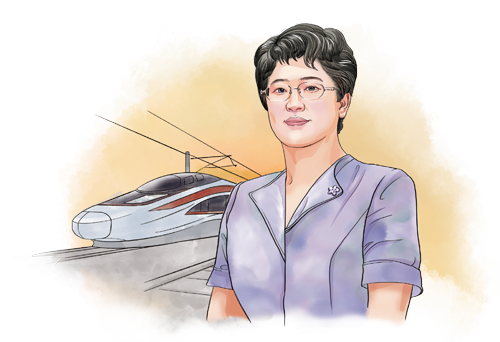
Liang Jianying, 50
From a common technician to the chief engineer behind some of China's biggest technological innovations in transportation, Liang Jianying said she was fortunate to have worked in a time of rapid development in China's high-speed railway sector, which has provided ample opportunities for her team's ingenuity and efforts to shine.
In 2004, China published a plan to greatly expand the nation's railway system, thus kick starting the era of high-speed rail. China had to import high-speed trains at that time, and Liang soon realized the importance of building innovation capability and being self-sufficient in science and technology.
Two years later, Liang was tasked with designing her first 300 kilometers per hour high-speed train. "The shoulders of giants can be shaky and hard to stand on, we have to become giants ourselves," she said.
But designing a bullet train is no easy task. A single train can contain over 500,000 components, and improving its speed from 200 to 300 km/h means overcoming numerous technical obstacles.
The challenge did not faze Liang, and by December 2007, she created China's first high-speed train with a speed between 300 to 350 km/h. In 2010, she broke the world speed record at the time with CRH380A, a bullet train from the Hexie series with an operation test speed of 486.1 km/h.
"China is a vast country with huge traffic demand and complex geography. With so much support from my country, if I was not able to create the best train in the world, then I would be letting the nation down," Liang said. This is the belief that compelled Liang to achieve excellence throughout the years.
In 2017, the new and improved Fuxing series bullet train entered service, gradually becoming the mainstay of China's high-speed rails. As of the end of 2021, there were 1,191 Fuxing trains in operation and they had safely served over 1.37 billion passengers across approximately 1.36 billion kilometers.
On July 20, 2021, after five years of hard work by Liang and her team, China's first 600 km/h high-speed magnetic levitation train made its debut in Qingdao, Shandong province. It is one of the fastest examples of ground-based public transportation in the world to date.
"I believe that in the foreseeable future, there will be more Chinese high-speed trains with independent intellectual property debuting new styles and speeds," she said.
The vice-president and chief engineer of China Railway Rolling Stock Corporation Qingdao Sifang, the company behind the Hexie and Fuxing bullet trains, which have propelled China to the position of a global powerhouse in high-speed trains.
Liang and her team received the Special Prize of the 2015 State Scientific and Technological Progress Award for developing the Beijing-Shanghai high-speed railway network. She is currently the director of the National Innovation Center of High Speed Train.
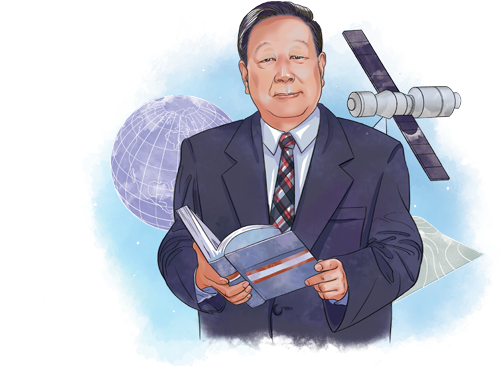
Li Deren, 83
"Love my China, strengthen my country" is the first tenet of the family teachings passed down by the great grandfather of renowned geomatics and geospatial information scientist Li Deren.
Li said he is glad to have lived up to that motto. At the age of 83, he is still serving his country through his life-long passion of surveying and processing geographic information using satellites and other remote-sensing technologies.
Last year, Li and his team received the first prize of the 2020 State Scientific and Technological Progress Award for developing advanced Earth observation systems, which can swiftly provide high-definition images and information for applications including disaster relief, infrastructure construction and environmental protection.
The project took Li's team of nearly 100 experts a total of 15 years to complete. Now, Li is hoping to improve that system further and create more digital products that can help countries around the world achieve sustainable development.
"Science should serve the country, and geomatics is a discipline critical to national security and economic development," he said.
Collecting geographic data on nature and human activities helps experts and policymakers to arrive at informed decisions on sustainable development and other important needs, he added.
In March, Li and his team at the State Key Laboratory of Information Engineering in Surveying, Mapping and Remote Sensing at Wuhan University, Hubei province, published China's first global radar orthophoto.
An orthophoto is an aerial or satellite image without geometrical distortions, allowing scientists to measure the true distances of features within the photograph.
This makes an orthophoto a key tool for agriculture, resource management, urban planning and other industries.
Li said the map covers a land area of more than 200 million square kilometers, and the scientific data from the map are available for researchers around the world.
"We want to remove our reliance on foreign data, and pursue technological innovation to become more self-reliant," he said.
"The most important element of the scientific spirit is to seek truth from facts. We should respect science and scientists, but we can't place blind faith in existing teachings or foreign technologies."
"We have to make original breakthroughs that can solve the critical needs of the country," he added.
A world-renowned scientist in photogrammetry and remote sensing. He is an academician of the Chinese Academy of Sciences and the Chinese Academy of Engineering, and an honorary member of the International Society for Photogrammetry and Remote Sensing.
Li, also a professor at Wuhan University, Hubei province, has won numerous prestigious awards, including the first prize of the 2020 State Scientific and Technological Progress Award and the ISPRS Brock Gold Medal Award for his outstanding contributions to photogrammetry. He has trained over 200 doctoral students, and is one of the key contributors that transformed China into a global geomatics powerhouse.
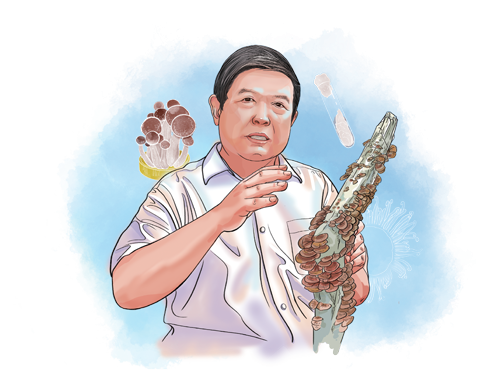
Li Yu, 78
One intriguing fact about China's historic victory over extreme poverty is that part of its foundations were built on edible fungi and decades of innovative research.
Revitalizing rural China, promoting green development and pushing the envelope to better research and serve the nation's strategic needs are themes highlighted in the 14th Five-Year Plan (2021-25).
Li Yu, a noted mycologist and an academician at the Chinese Academy of Engineering, managed to achieve all these goals using tiny mushrooms.
"This is because growing fungi is not labor-, time- or resource-intensive. They are easy to plant and they require little investment," he said. "They grow very fast and they yield good financial returns. Thus, it is a first-choice industry for poverty alleviation."
China's agricultural industries produce a huge amount of plant stalks and animal manure every year, which can pollute the environment if not handled properly, Li added.
"Now, we can turn agricultural waste into fertile bags of nutrients for growing fungi," he said. "After they are harvested, we can process what's left in the bags into fertilizer, effectively turning trash into treasure."
"This will build a sustainable cycle in which farmers earn extra income from waste, consumers get tasty and healthy fungi products and the environment is cleaned in the process."
Since 2012, Li and his students have spent over 280 days most years traveling to 40 significantly impoverished regions across seven provinces to introduce fungi species and teach villagers how to use modern equipment and techniques to cultivate them.
His efforts have blossomed into a 35 billion yuan ($5.38 billion) production and manufacturing industry that features unique products made from fungi including chips, supplements, tea and ice cream, all while lifting 35,000 families from more than 800 villages out of poverty.
"Scientists, especially agricultural scientists, should not farm on the blackboard," Li said. "They need to get their feet in the field and use their research to help farmers become rich and live better lives."
A world-renowned mycologist who specializes in engineering and industrialization of fungi science and edible fungi. He is an academician at the Chinese Academy of Engineering and the president of the International Society of Medicinal Mushrooms.
His research has made substantial contribution to China's poverty alleviation effort, lifting hundreds of villages out of absolute poverty. In 2021, he received the honorary title of National Poverty Alleviation Models for his success in poverty eradication.
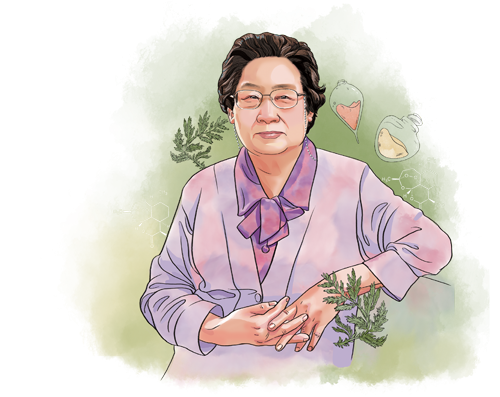
Tu Youyou, 92
This year marks the 50th anniversary of the discovery of artemisinin, the active compound that serves as the backbone for the most common and effective antimalarial treatment today.
According to the World Health Organization, about 240 million people in sub-Saharan Africa have benefited from artemisinin-based combination therapies.
By the end of 2021, China had trained tens of thousands of anti-malaria technicians for developing countries and built malaria prevention and control centers for 30 countries.
During the 1940s, China was ravaged by malaria, with nearly 30 million cases each year. In June 2021, the WHO announced China had eliminated this disease within its borders.
Tu Youyou, a 2015 Nobel Prize laureate for her discovery of malaria drug artemisinin, was thrilled to hear the WHO's announcement. But a sense of urgency and responsibility quickly followed, prompting Tu to ask her colleagues how many countries had not eradicated malaria and how Chinese researchers could help.
Last month, during a meeting with officials from the National Administration of Traditional Chinese Medicine, Tu said the number of cases and mortality rates of malaria have rebounded in some parts of the world.
In 2020, there were an estimated 241 million cases of malaria worldwide, claiming around 627,000 lives, according to the WHO. The African region carries a disproportionately high share of the global malaria burden. It was home to 95 percent of malaria cases and 96 percent of malaria deaths in 2020.
The mosquito-borne infectious disease remains a serious public health challenge, and it is important for the international community to enhance collaboration toward achieving a malaria-free world, she added. At the age of 92, Tu may not be able to work as hard as she did decades ago, but she reads monthly briefs on her team's research and often offers her advice on key projects.
Understanding how artemisinin acts on the malaria parasite, how to overcome drug resistance of artemisinin-based combination therapies and whether it can be used to treat other diseases are some of the focal points of her team's research. As Tu often said, artemisinin is a gift given by China to the world. Today, artemisinin stands as the embodiment of the innovative use of traditional Chinese medicine for the benefit of humanity.
A Chinese pharmaceutical chemist whose discovery of the malaria drug artemisinin has saved millions of lives across the globe. She received the 2015 Nobel Prize in physiology or medicine, becoming the first Chinese to win this award.
She is also the recipient of the 2016 State Preeminent Science and Technology Award, China's highest honor for a scientist, and the Medal of the Republic, China's highest state honor.
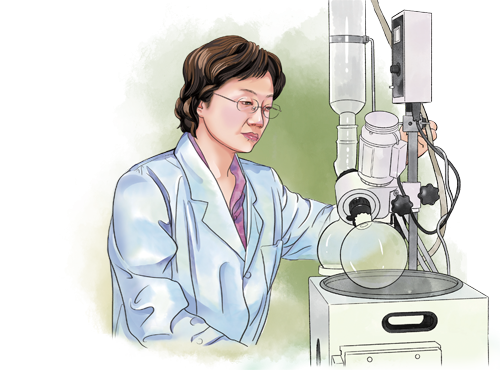
Wang Yingjun, 68
For Wang Yingjun, the greatest joy is to see her work on biomedical materials can help so many patients and seniors live a better life. Over the last four decades, Wang has focused on creating and improving biomedical materials and high-end medical equipment.
She invented the implant for regenerative restoration for load-bearing bone with large defects, which has led to products that have been used in over 400 hospitals in China and Europe, saving more than 300,000 patients from amputation and disability.
Now, Wang and her team are spearheading a demonstration center based on the Biomaterials Innovation and Cooperation Platform to develop and commercialize new biomedical materials and high-end medical equipment.
In the 1980s, there were not many Chinese researchers working on bioactive materials. At the time, the living and lab conditions were poor and Wang had no one to help her, but she loved her work so much that she would often stay up all night in the lab, or pour water on her dorm bed as cooling during the hot summer months.
"Once I entered this field, I couldn't help but to keep working hard, overcome obstacles and contribute wholeheartedly," she said. "Younger generations of scientists are becoming more capable, but the fighting spirits, dedication and principles from the older generations should be passed down and adopted."
"Scientific research is doing what others have not done, so there won't be innovations without the innovative spirit," she said. "There is no shortcut or short sighted pursue of success when making innovations."
At the same time, a successful scientist should always be curious and hungry for new knowledge, which is important for inter-disciplinary research such as biomedical materials.
New technologies such as artificial intelligence, big data, 3D printing, as well as new advances in biology and life sciences, are contributing to the development of biomaterial research, she said, adding the hardest part for a scientist is to keep innovating and venture into unfamiliar fields.
"Doing research in a lab is hard and industrializing scientific research is even harder, but I have no regrets," she said. "My dream is to let the Chinese people have access to world-class biomaterial made by Chinese scientists."
An academician of the Chinese Academy of Engineering and the director of the National Engineering Research Center for Tissue Restoration and Reconstruction.
She is a noted biomedical material expert who has developed original breakthroughs and products in bone, teeth, tissue engineering and regenerative medical materials.

Zhu Tao, 49
Zhu Tao said recently that CanSino Biologics has been working hard to bring the future of COVID-19 vaccinations, where they may replace the "jab" with a "huff", the procedure being as simple as "sipping coffee".
The recipient takes a deep breath from a cup containing the aerosol of the vaccine, holds the gas for around five seconds, and slowly breathes out. The whole process takes around 10 seconds and is completely painless, making it ideal for individuals who are scared of needles, he said.
The vaccine has recently entered late-stage clinical trials. Preliminary data show that it is safe and can deliver broad protection against the COVID-19 virus and its mutated strains.
Inhaled or nasal spray COVID-19 vaccines are widely regarded as a game changer in the global fight against the highly transmissible Omicron variant, which primarily targets the upper airway. These types of vaccines will bolster the mucosal immunity of the respiratory tract, thus providing a first line of defense against the pathogen.
As a result, researchers in the United States, Canada, the United Kingdom, India and Japan are developing these types of vaccines. CanSino Biologics is one of the global front-runners in the race.
"We have always valued scientific and technological innovation as the No 1 source of productivity," he said. He added that an innovative spirit, a strong will to overcome difficulties, and conducting research in a rigorous and thorough manner are key to success for scientists.
"We scientists should continue to nurture quality talents and make new innovations, and contribute our insight and effort to achieving self-reliance in science and technology," he said.
A vaccine expert and the chief scientist at CanSino Biologics. He is a member of the Chinese People's Political Consultative Conference National Committee, China's highest political advisory body.
Zhu is one of the key scientists behind Convidecia, a single-dose adenovirus-based viral vector vaccine for COVID-19, which has been listed by the WHO for emergency use.
https://epaper.chinadaily.com.cn/a/202205/30/WS6293fa1da3109375516ec74a.html




